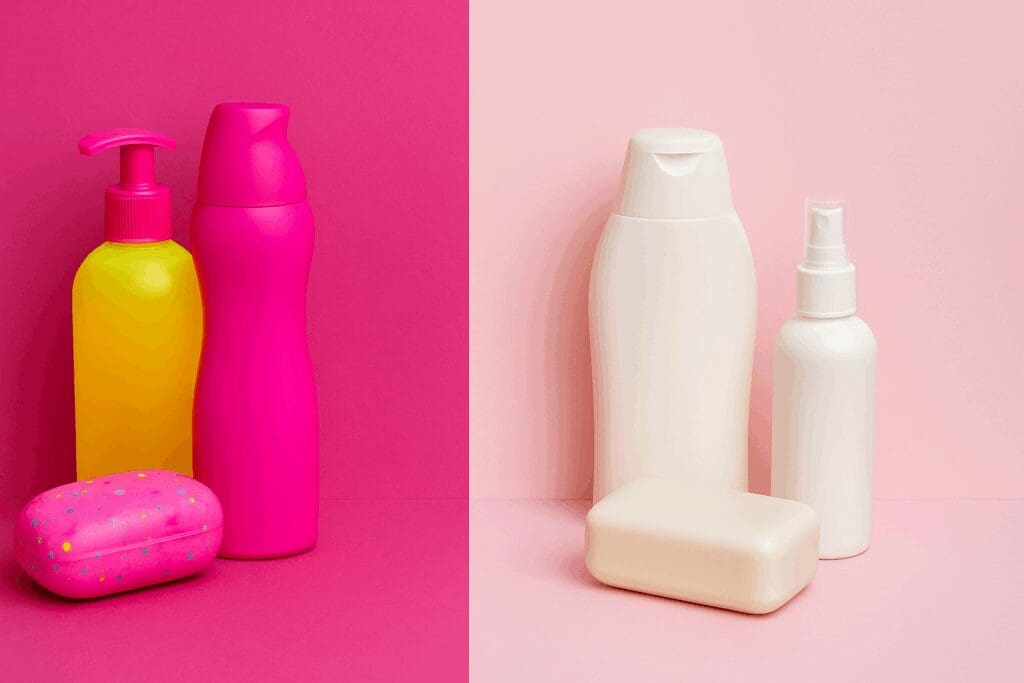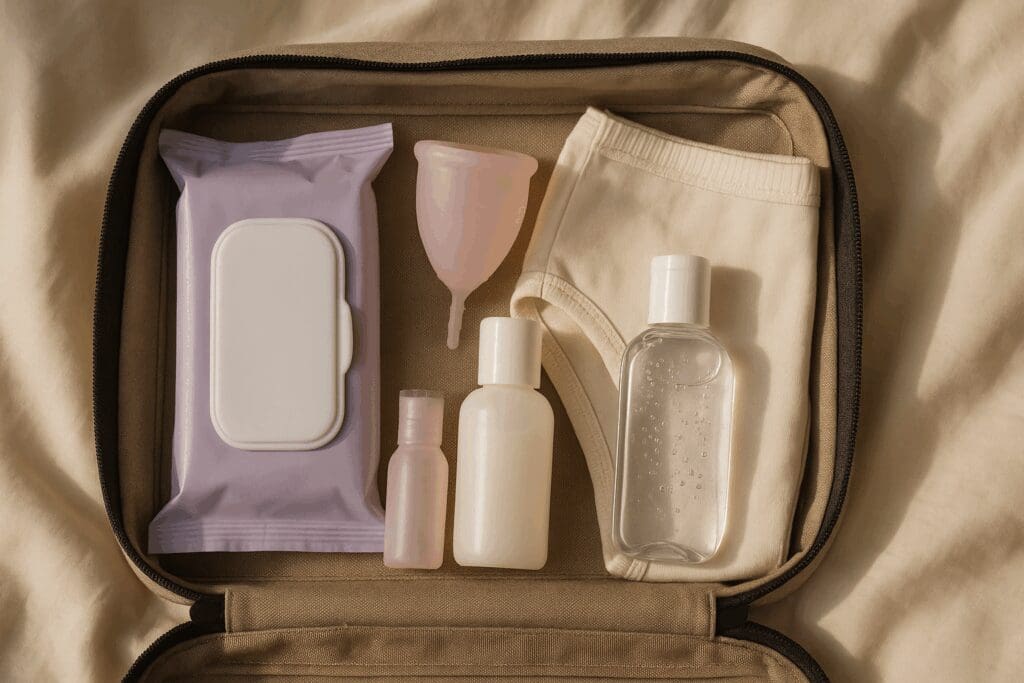A woman’s intimate health is the cornerstone of her overall well-being, yet it remains one of the most misunderstood and under-discussed topics in modern health discourse. A thorough and personalized female hygiene checklist is not just about cleanliness; it reflects a woman’s relationship with her body, her understanding of natural cycles, and her commitment to proactive self-care. From managing the nuances of hormonal fluctuations to preventing infections and maintaining daily comfort, female personal hygiene serves as a crucial pillar of physical, mental, and sexual health. Integrating a routine of thoughtful, informed feminine care practices enables women to cultivate not only a sense of freshness but also confidence and long-term protection against a host of intimate health challenges.
You may also like: The Vital Link Between Sex and Hormones During Menopause: What Every Woman Should Know
Understanding the Importance of Female Personal Hygiene Beyond Surface Cleanliness
Hygiene for ladies is often oversimplified as a matter of appearance or scent, but its role extends far deeper. Intimate health intersects with multiple systems of the body, influencing everything from urinary tract function to hormonal regulation and immune defense. Poor hygiene habits can pave the way for yeast infections, bacterial vaginosis, urinary tract infections (UTIs), and skin irritation, all of which can become recurrent if underlying behaviors are not addressed.
It’s essential to recognize that feminine hygiene is not a one-size-fits-all checklist. The needs of the body vary depending on a woman’s age, menstrual cycle phase, sexual activity, and even lifestyle factors like stress and diet. What works for one woman may be insufficient or excessive for another. A customized, evolving hygiene routine rooted in science and self-awareness is therefore key.
Feminine care also has psychological implications. The simple act of engaging in a feminine personal hygiene routine can promote mindfulness, self-respect, and emotional clarity. When a woman takes deliberate care of her body, she reinforces a positive self-image and a deeper connection to her physical identity.
Feminine Hygiene Routine Fundamentals: Daily Habits for Intimate Wellness
The foundation of any good hygiene habits for women starts with consistency and gentleness. Contrary to popular belief, the vaginal canal is a self-cleaning organ and does not require harsh cleansing agents or scented products. In fact, using such products can upset the delicate pH balance and microbiome, leading to more harm than good. Instead, cleansing the vulva—the external genital area—once daily with warm water and a mild, unscented soap is sufficient.
A critical point on the female hygiene checklist is fabric selection. Breathable cotton underwear allows airflow and reduces moisture buildup, lowering the risk of bacterial growth and irritation. Tight synthetic fabrics may be fashionable, but they can trap sweat and heat, contributing to conditions ripe for infection. Women should also aim to change their underwear daily and more often during menstruation or workouts.
Equally important is wiping direction after using the restroom. Always wipe from front to back to prevent the transfer of bacteria from the rectal area to the urethra and vagina. This simple practice plays a significant role in preventing urinary tract infections, which are both common and potentially serious if left untreated.

Menstrual Hygiene: The Cornerstone of Proper Hygiene for Females
Menstrual care is perhaps the most central aspect of feminine hygiene, yet it is still surrounded by misinformation. Choosing the right menstrual product—whether pads, tampons, menstrual cups, or period underwear—depends on individual preferences and sensitivities. However, changing products frequently is universally critical. Tampons, for instance, should be changed every 4 to 8 hours to reduce the risk of toxic shock syndrome (TSS), a rare but potentially life-threatening condition.
It’s important for women to track their cycles and prepare in advance. This includes carrying backup feminine care items such as pads or pantyliners and keeping hand sanitizer or wet wipes available for clean handling when access to a bathroom is limited. During heavy flow days, double protection using both a tampon and a pad or a menstrual cup with a pantyliner can prevent leakage and maintain comfort throughout the day.
Feminine hygiene routine during menstruation also includes external cleansing. Washing the vulva with lukewarm water at least twice daily can help remove blood and sweat accumulation. It’s also a good time to be extra attentive to hydration and diet, as these can influence both menstrual symptoms and odor.

The Role of Feminine Products and Their Impact on Intimate Health
Feminine products range from everyday essentials to specialized items marketed for odor control, freshness, or pH balance. While the market offers a wide array of options, not all feminine care products are created equal—or even necessary. Vaginal douches, for instance, are not recommended by most gynecologists, as they can wash away beneficial bacteria and increase the risk of infections. Similarly, heavily fragranced soaps or sprays can trigger allergic reactions or disrupt the vaginal ecosystem.
That said, certain natural feminine hygiene products can support health without causing harm. These include pH-balanced, fragrance-free cleansers designed specifically for the vulva, intimate moisturizers for postmenopausal women, and probiotic supplements that support a healthy vaginal microbiome. When selecting feminine care items, ingredients should be reviewed closely. Fewer additives and a short, recognizable ingredient list are generally good signs.
Beyond external products, nutrition plays a subtle yet significant role in female hygiene. Foods rich in probiotics like yogurt, kefir, and kimchi help support the body’s natural flora, while reducing sugar intake can minimize the risk of candida overgrowth, a common cause of yeast infections. Hydration also aids in flushing out toxins and maintaining tissue elasticity.
The Female Hygiene Checklist for Sexual Health and Aftercare
Sexual activity introduces a new layer of responsibility in a woman’s personal hygiene routine. Before intimacy, both partners should ideally wash their hands and genitals to minimize bacterial exchange. Post-intercourse hygiene is even more critical. Urinating after sex is widely recommended to flush out potential bacteria from the urethra, thereby reducing the chance of urinary tract infections.
Women should gently cleanse their external genital area with warm water following intercourse, avoiding soaps or internal cleansing. This helps remove sweat, semen, and any lubricants that may irritate sensitive skin. Wearing breathable underwear or opting for no underwear at night can further promote healing and ventilation.
Choosing the right lubricants is also part of the female hygiene checklist. Water-based lubricants are generally safest and least likely to cause irritation. Oil-based products, while long-lasting, can degrade latex condoms and contribute to vaginal imbalance. Silicone-based options are longer-lasting but may be harder to wash off and less ideal for women prone to sensitivity.

Good Hygiene Tips for Females During Travel and Active Lifestyles
Busy schedules and frequent travel often disrupt routines, but personal hygiene for women should not take a backseat. When on the go, packing a compact hygiene kit can be a game-changer. This kit might include pH-balanced wipes, spare underwear, a small bottle of intimate cleanser, and travel-sized sanitary products. Feminine hygiene should never be compromised due to convenience or embarrassment.
During long flights or travel days, it’s important to change pads or pantyliners regularly, even if the flow is light. Sitting for extended periods in the same undergarments can create a breeding ground for bacteria and cause chafing. Lightweight cotton or moisture-wicking fabrics can help reduce discomfort and maintain freshness.
Public restrooms pose their own challenges. Always wash hands before and after using the restroom, and use a tissue or toilet paper as a barrier when handling flush levers or stall locks. Keeping a small bottle of alcohol-based hand sanitizer handy ensures cleanliness when soap and water aren’t readily available.
Natural Feminine Hygiene Approaches: Eco-Friendly and Body-Safe Alternatives
For many women, switching to natural feminine hygiene alternatives represents both a health-conscious and environmentally responsible choice. Products like organic cotton pads, reusable cloth pads, and silicone menstrual cups eliminate exposure to bleach, pesticides, and synthetic fragrances found in many commercial products. They also reduce landfill waste, offering a long-term sustainable option.
Essential oils like tea tree and lavender, when diluted appropriately, are sometimes used in homemade intimate sprays or bath soaks for their antimicrobial properties. However, it is important to use these with caution and only in external applications, as they can irritate mucous membranes if improperly prepared or used internally.
Clothing also plays a role in natural hygiene for ladies. Opting for natural fibers like cotton, bamboo, or linen over synthetic blends reduces heat and moisture buildup. Loose-fitting pants or skirts during menstruation can also ease bloating and minimize skin contact that leads to friction or sweating.
How to Have Good Hygiene as a Girl: Building Habits Early for Lifelong Health
Instilling feminine personal hygiene practices from a young age is one of the most empowering gifts caregivers can offer. Teaching young girls about their bodies, how to have good hygiene as a girl, and why these practices matter lays the groundwork for confident, healthy adulthood. Discussions should be age-appropriate but factual, removing shame and secrecy from topics like menstruation or body odor.
Education should include the anatomy of the female reproductive system, proper techniques for cleansing, the importance of regular underwear changes, and how to use feminine care products safely. Introducing these habits gradually helps girls internalize them as normal rather than burdensome. Parents and guardians can model behaviors, provide product options, and create an environment where questions are welcomed.
For girls experiencing their first period, the conversation should be both practical and reassuring. Discussing how to prepare for your first time girl hygiene needs, including packing a period kit and understanding what is normal versus concerning, helps reduce anxiety and fosters independence.

Feminine Hygiene Checklist Essentials for Different Life Stages
As women transition through life stages—from adolescence to pregnancy, postpartum, and menopause—their feminine hygiene needs evolve. For teenagers, managing hormonal acne, heavy periods, and irregular cycles may be the primary concerns. During this time, lightweight feminine care products that are breathable and easy to use become vital.
Pregnant women may experience increased vaginal discharge, heightened sensitivity, and urinary incontinence. During this stage, personal hygiene for women includes frequent washing, changing liners regularly, and choosing fragrance-free products to avoid irritation. Postpartum hygiene emphasizes wound care, especially after vaginal delivery or C-sections, and the use of specialized pads to manage lochia (post-birth bleeding).
Menopausal women face changes in skin elasticity, pH levels, and vaginal dryness due to declining estrogen. Feminine hygiene for this stage may include vaginal moisturizers, hormone therapy if recommended by a physician, and avoiding soaps that strip the skin’s natural oils. Each phase requires reevaluation and adaptation of the hygiene routine to ensure comfort and health.
How to Take Care of Yourself as a Woman Hygienically in a Modern World
Modern living introduces unique challenges to maintaining proper hygiene for females. From sedentary work environments that reduce natural airflow to the pressures of social media influencing product choices, women must navigate a complex web of influences. It is important to filter out marketing noise and focus on scientifically sound, body-positive approaches to intimate care.
Smart technology, including period tracking apps and wearable wellness devices, can support a more data-driven hygiene routine. These tools offer reminders to change menstrual products, track ovulation, or monitor hydration levels—each of which indirectly supports intimate health. However, technology should complement, not replace, bodily intuition.
Time management also affects hygiene. Allocating even a few minutes daily to focus on intimate care can lead to major health benefits. This might involve doing a mid-day refresh in hot weather, taking probiotics consistently, or choosing breathable materials when dressing. Hygiene should not be viewed as a chore but as an extension of holistic wellness.

Why a Women Hygiene Routine Must Include Mental and Emotional Self-Care
While the physical aspects of hygiene for women are paramount, the emotional landscape cannot be overlooked. Stress can disrupt hormonal balance, deplete immune defenses, and lead to poor decision-making around health habits. A comprehensive women hygiene routine should include practices that lower stress, such as yoga, meditation, or journaling.
Self-image and body confidence also influence hygiene behaviors. Women who feel disconnected or ashamed of their bodies may neglect care or rely on masking odors with artificial scents instead of addressing the root causes. Cultivating a mindset of acceptance and curiosity about one’s body leads to better choices and overall satisfaction.
Relationship dynamics are another factor. Partners should be supportive and respectful of hygiene practices, understanding that these routines are integral to a woman’s comfort and health. Open communication about boundaries, preferences, and concerns fosters a safe and respectful environment that prioritizes well-being for all.
Frequently Asked Questions: Advanced Guide to Female Hygiene Checklist and Beyond
1. How can women tailor their hygiene routines based on hormonal changes?
Hormonal fluctuations throughout the menstrual cycle can impact everything from skin pH to sweat production, making it essential to adapt your feminine hygiene routine accordingly. During ovulation, estrogen spikes may increase vaginal secretions, requiring more attention to intimate hygiene and breathable fabrics. In the luteal phase, oilier skin can lead to more breakouts, so adjusting your skincare and facial cleansing habits is part of proper hygiene for females. Awareness of these changes allows women to proactively manage discomfort, odor, and sensitivity using appropriate feminine care items. This level of body awareness elevates the female hygiene checklist from routine to responsive self-care.
2. What are some overlooked feminine care products that support long-term health?
While most female personal hygiene kits include soap and pads, few women realize the value of pH-balanced cleansers, probiotic supplements, and menstrual cups. These feminine care products promote not just cleanliness but microbial balance, supporting vaginal flora and reducing infections. Consider also investing in washable cotton liners and chemical-free laundry detergents, which reduce irritation and allergies—a growing concern in hygiene for ladies. Choosing fragrance-free, dermatologist-tested options reflects good hygiene habits for women that go beyond surface-level care. Long-term, these decisions reduce chronic issues like dermatitis or recurrent UTIs.
3. How can women maintain good hygiene while traveling or during outdoor activities?
Maintaining proper hygiene for women on the go requires portable, multi-use solutions. Feminine wipes, menstrual discs, travel-size pH-neutral cleansers, and antimicrobial underwear are essentials for your female hygiene checklist. Hydration also plays a role in flushing bacteria and keeping the body’s natural detox systems working efficiently. For extended travel or hikes, consider a collapsible bidet bottle or antimicrobial toiletry bag to store feminine products. Practicing good hygiene for women isn’t limited to home routines—it requires creative problem-solving in dynamic environments.
4. What role does nutrition play in intimate hygiene and odor control?
Diet profoundly influences personal hygiene for women, especially in regard to vaginal health and body odor. High sugar intake and processed foods can disrupt microbial balance and increase yeast infections, while probiotics and hydration support natural defenses. Cruciferous vegetables and chlorophyll-rich greens can also help regulate internal pH levels, a lesser-known tip in the realm of feminine hygiene. A strong hygiene tips for girls approach includes not only what you apply externally but what you consume daily. Integrating gut-friendly foods is a subtle but powerful step toward more effective feminine personal hygiene.
5. What psychological benefits are tied to a consistent feminine hygiene routine?
Establishing a reliable feminine hygiene routine fosters a sense of self-worth and autonomy, particularly in adolescence or post-puberty years. Routine care rituals can be grounding, reduce anxiety, and instill body confidence, especially when supported with good hygiene tips for females. Regularly practicing hygiene for ladies isn’t just about cleanliness—it’s about reinforcing personal boundaries and self-respect. For many women, these practices serve as daily affirmations of care, dignity, and emotional resilience. Understanding how to take care of yourself as a woman hygienically contributes to mental as well as physical health.
6. What should a teenager know about how to prepare for your first time girl hygiene?
Young women experiencing puberty for the first time benefit from guidance on how to have good hygiene as a girl. This includes understanding discharge as a natural function, changing underwear daily, and how to dispose of feminine products discreetly. Educating teens on natural feminine hygiene without shame promotes a healthy transition into adulthood and encourages lifelong habits. Preparation also means assembling a discrete pouch with backup pads, wipes, and an extra pair of underwear—key components in the female hygiene checklist for teens. Having confidence in one’s hygiene knowledge reduces embarrassment and improves school attendance and social participation.
7. How does sleep hygiene intersect with personal hygiene routine for women?
Sleep and feminine hygiene are more interconnected than they seem. Poor sleep can disrupt skin renewal, immune defense, and perspiration regulation—all of which affect personal hygiene for women. Wearing breathable, clean sleepwear, removing makeup before bed, and avoiding synthetic liners overnight are important hygiene tips for girls seeking better rest. A dedicated wind-down routine also supports hormonal balance, which in turn affects sweat glands and sebum production. As part of your women hygiene routine, consider integrating lavender essential oil or magnesium lotions to enhance both hygiene and sleep quality.
8. How can perimenopausal women update their feminine care strategies?
Hormonal shifts in perimenopause often lead to vaginal dryness, increased sensitivity, and changes in body odor, requiring adjustments to your feminine care items. Replacing alcohol-based wipes with moisturizing ones, adding water-based lubricants, and avoiding synthetic undergarments are part of proper hygiene for ladies in midlife. Feminine hygiene at this stage also involves regular pelvic exams and choosing cotton pantyliners that allow airflow. Learning how to have better hygiene as a woman during menopause isn’t just about symptom control—it’s about staying empowered through bodily changes. Updating your female hygiene checklist at this life stage reflects both wisdom and proactive care.
9. What are the environmental and ethical aspects of good hygiene habits for women?
Sustainable feminine products—like reusable pads, menstrual cups, and biodegradable wipes—offer eco-friendly alternatives that still meet high standards of feminine personal hygiene. Many mainstream feminine care products contain plastics, bleaches, or dyes that can irritate skin and pollute ecosystems. Conscious hygiene for ladies also involves understanding product sourcing, company transparency, and impact on local communities. Incorporating these values into your feminine hygiene routine supports not just your body, but the planet. As part of your commitment to good hygiene for women, choose items that align with your environmental and ethical values.
10. How does the modern female hygiene checklist evolve with digital tools and tech?
Apps that track periods, ovulation, and hydration help personalize your feminine hygiene routine by anticipating needs before symptoms arise. Smart water bottles, skin analyzers, and wearable pH sensors now play a role in maintaining proper hygiene for females. There are even AI-driven reminders for restocking feminine care items or alerting users to potential infections based on symptom input. These tools are especially helpful for those managing chronic conditions or disabilities, improving access to hygiene for ladies who need adaptive support. Today’s female hygiene checklist is no longer analog—it’s digital, dynamic, and data-informed.
Conclusion: Embracing the Female Hygiene Checklist as a Daily Act of Empowerment
Incorporating a well-rounded female hygiene checklist into everyday life is far more than a ritual of cleanliness—it is an ongoing act of self-respect, empowerment, and informed wellness. By understanding the intricate interplay between physical, emotional, and lifestyle factors, women can build a sustainable feminine hygiene routine that evolves alongside them. From choosing the right feminine care products to recognizing the impact of stress, diet, and sexual habits, every choice contributes to the tapestry of long-term intimate health.
Personal hygiene for women is not a one-time lesson but a lifelong journey marked by curiosity, adaptation, and self-awareness. It is not about conforming to beauty standards or chasing unattainable ideals, but about nurturing the unique needs of one’s body with intention and care. Whether you are just beginning to explore how to have better hygiene as a woman or refining your established practices, the checklist serves as a grounding guide.
As our understanding of feminine hygiene deepens with science and society’s progress, so too should our commitment to honoring our bodies through thoughtful action. The best feminine hygiene routine is one that is rooted in knowledge, guided by intuition, and executed with love. When we embrace this mindset, we not only prevent discomfort and illness—we thrive in every sense of the word.
Further Reading:
Feminine Care Basics: 5 Things You Need to Know
So-Called ‘Feminine’ Hygiene Is Important for Anyone Who Has a Vagina



